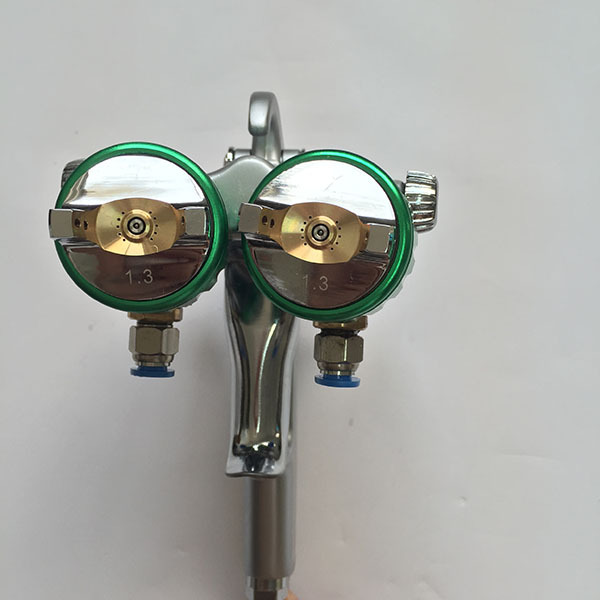When you are wanting to purchase a paint-spray gun, it is important for you to understand the different types of spray guns so that you can make a better-informed choice. There are two main types of paint-spray guns, including the gravity-feed guns, which have the cups on the top, and the conventional-feed guns, which have the cups on the bottom. Conventional-feed guns are also called siphon feeds by many paint technicians.
Gravity-feed versus conventional-feed guns
Within the painting industry, there are proponents who favor one gun type over the other. Conventional-feed guns are normally less expensive than gravity-feed guns. They also have larger cups and can hold more paint. They were the first type of paint-spray gun that was used in automotive painting and body repair work before gravity-feed guns became widely available in the 1980s. Gravity-feed guns are now more popular than are conventional-feed guns.
Gravity-feed guns require less air pressure to deliver the paint since they don’t have to draw the paint up. This helps to increase their efficiency, and they use all of the paint that is poured into their cups. They are more expensive than conventional-feed guns. A benefit of gravity-feed guns is that they can be used to paint in tight areas in which the hanging feed cups of conventional guns would otherwise bump into freshly painted surfaces. With their clear cups, it is easy for you to see when you are needing to add more paint so that you do not have an interruption in your paint flow.

Fluid atomization and paint-gun nozzles
All paint-spray guns atomize the fluid at the tip of the nozzle where the paint leaves when it is sprayed. The guns have separate passages for air and fluid. When the air rushes past the fluid passage, a vacuum is created that draws the paint into the air stream. As the air mixes with the fluid, atomization occurs and the paint ejects from the nozzle in a fine mist.
Sufficient atomization is achieved when the paint is drawn up in conventional-feed guns or pulled down in gravity-feed guns. Conventional-feed guns require greater air pressure than do gravity-feed guns. In many cases, siphon-feed guns cannot be used in high-pressure, low-volume systems, or HVLPs. Using high-pressure paint sprayers is prohibited in certain parts of the U.S., including California. HVLP spray guns are promoted as clean technology. Since gravity-feed guns require less air pressure, this makes them a better choice for people who are purchasing them in states requiring the use of HVLP systems.
Air tubes
Using lower air pressure when spraying has several advantages. Doing so will waste less paint, cause less overspray and will allow you to have more control. These advantages have led many professionals to switch from conventional-feed guns to gravity-feed guns.
People who have conventional-feed guns who want to achieve sufficient atomization while using lower air pressure may do so by pressurizing the cup. This helps by forcing the paint up into the feeding tube. Pressurized cups have air tubes that connect to the air supply from the cups.
Price
Prices for spray guns vary. The higher-priced guns have higher-quality machining and better interchangeability of the nozzle components. They also have better atomization. Some all-around guns have single tips ranging in size from 1.7 millimeters to 1.8 millimeters, which can be used to spray your primer and your single-stage or dual-stage paint job. You just have to make certain that you care for the gun and clean it properly.
Some spray-gun kits have two guns and an added nozzle for larger jobs or heavier paints. The smaller detail guns included in the kits are used for areas such as the doorjambs, under the hood and the wheels. Shops that perform custom painting, detail work and that use high volumes of paint will need to purchase expensive guns costing between $500 to $600. There are also some less expensive guns that will do nicely for smaller jobs.
Air compressors
With air compressors, you need good volume and pressure. Paint guns have ratings assigned according to the cubic feet per minute of paint that is delivered at specified pounds per square inch. You can look at the requirements of your gun to see that the air compressor you choose will be able to produce the needed volume at the pressure consistently during use. Try choosing a compressor that produces one and one-half times the cubic feet per minute at the specified pressure.
Finally, you’ll need to make certain that you have a filter and a regulator. They work to keep debris from getting into your paint while also keeping your inlet pressure lower than the required pounds per square inch.
For a great high-quality dual-nozzle gun, order your PChrome enhanced silvering gun on our website today.

